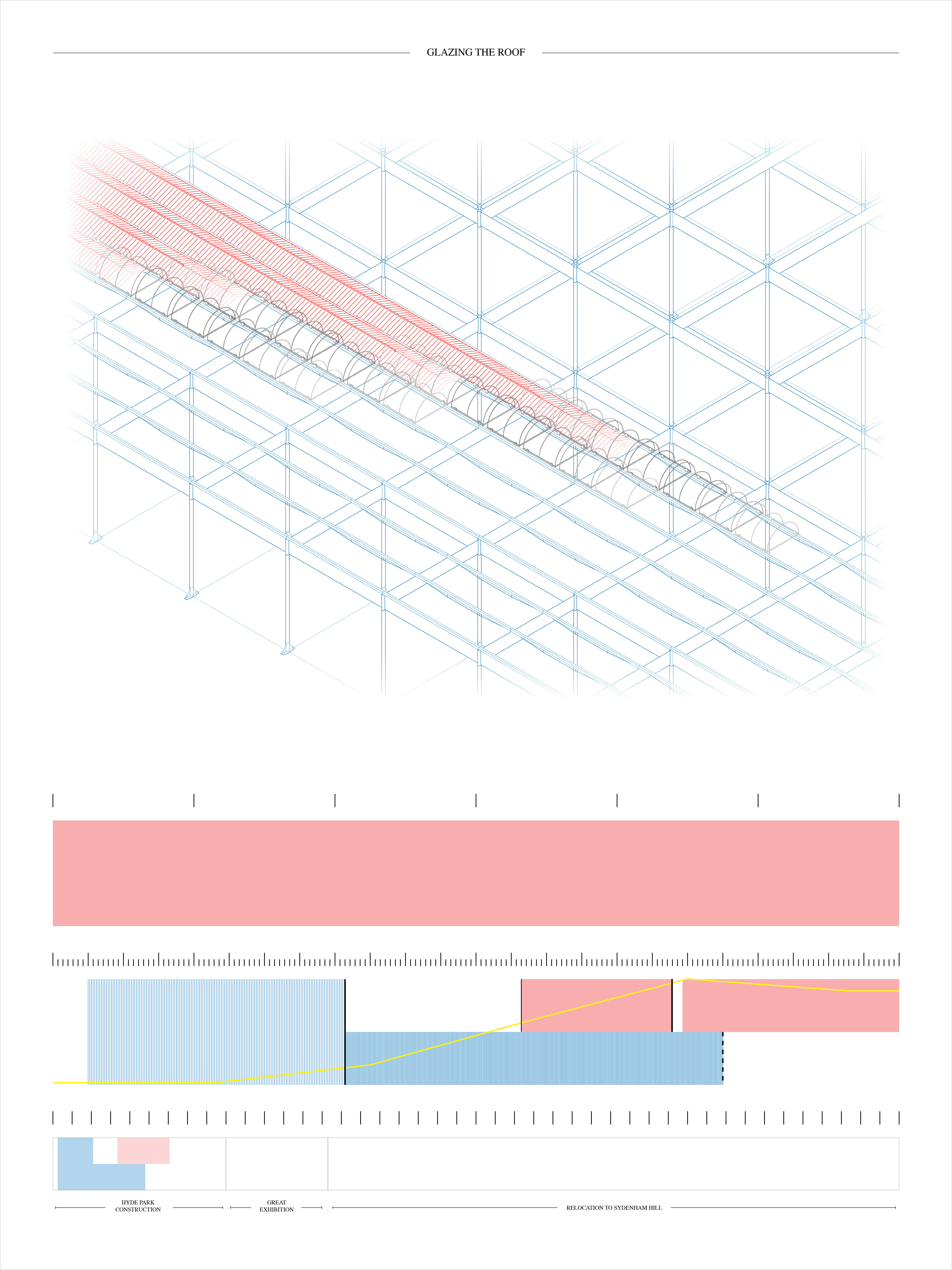Crystal Palace - Rhino Model (Structure)
Ephemeral Palace: The Crystal Palace and the Element of Time
Washington University in St. Louis
Arch 430O: The Crystal Palace
Instructor: Shantel Blakely
This project engages ideas of temporality, impermanence, and embodiment surrounding the production of the Crystal Palace and the Great Exhibition of 1851. The topic extends the idea of production from the actual assembly of the Crystal Palace to its planning, documentation, and experience as a cultural phenomenon and spectacle. Drawing was used as a fundamental methodology in the exploration of the topic.
The project calls for a re-evaluation of the contemporary image of the Crystal Palace, incorporating time as one of the major contributions of the structure to contemporary architecture and building practices. The project dissects each of five activities that occurred in the assembly of the Crystal Palace: the setting out of the columns, the raising of columns and girders, the glazing of the roof, the hoisting of the nave trusses, and the hoisting of the transept ribs. Each plate offers a vignette of a one of these activities, incorporating the tools and construction practices that enabled its unrivaled efficiency. Below these vignettes, each activity is contextualized within the lifespan of the Crystal Palace at Hyde Park in a series of three data graphics. The first scale considers the quantity of the component installed within one week. The second scale considers the activity within the context of the full assembly schedule. The third scale contextualizes the assembly process within the full lifespan of the Crystal Palace, from construction to disassembly and relocation to Sydenham.





